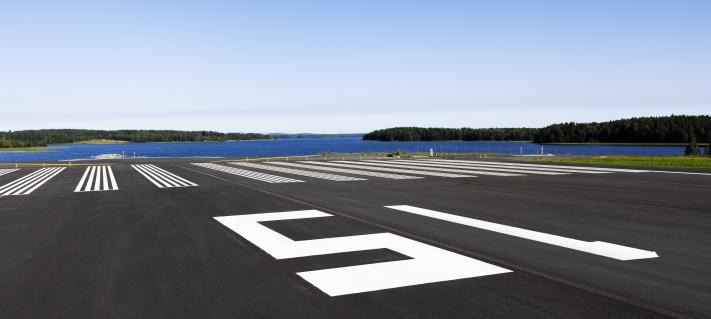Good environmental work is part of Finavia’s corporate responsibility. Our Sum of Good Things article series highlights details of Finavia's responsibility work. This instalment focuses on the efficient use of Finnish airspace.
The use of airspace in Finland and around Helsinki Airport is among the most efficient in Europe. A study comparing the busiest airports in Europe measured flight times during the approach phase, and delays related to air traffic control operations. At most, aircraft at European airports had to spend nine extra minutes on average in the approach phase, while at Helsinki Airport, the waiting time was only around one minute.
“Holding time can mean that an aircraft has to fly in a circular pattern in a specified area until air traffic control gives it permission for final approach and landing,” says Mikko Viinikainen, Vice President of Sustainability at Finavia.
A well-planned and well-managed airspace
In the airspace around Helsinki Airport, additional holding manoeuvres are very rarely needed. During the busiest hours, air traffic control manages the order of approaching aircraft in a safe manner, and aircraft may have to fly in an S-shaped curve before their final approach. The additional flight distance and delay time, however, are short compared to many other busy airports in Europe.
Why does our airspace function so well?
“In part, it has to do with the number of aircraft not being as high as around airports like London Heathrow. Efficiency is also achieved by careful planning of airspace use, air traffic control, and the collaboration between the different counterparts,” Viinikainen says.
“International collaboration also plays a part. For example, Air Navigation Services Finland (ANS Finland) optimises the routes of aircraft approaching Helsinki through Estonian airspace together with Estonian authorities even before the aircraft reaches Finnish airspace,” he says.
Helsinki Airport has the highest share of green landings
The flight operation methods that aircraft use during approach and landing, as well as the extra minutes they spend in the air, have a significant impact on the environment and the atmosphere. Over the past ten years, the Continuous Descent Operation method has made it possible to decrease aircraft fuel usage during the approach phase by between 10% and 30%. With a narrow-body aircraft, this is equal to 100 kilograms of fuel and 320 kilograms of carbon dioxide emissions.
Of the 30 largest airports in Europe, Helsinki Airport has the highest share of these so-called green landings. The target figures of aircraft employing Gradual Descent Operations are tied to the airport’s environmental permit – during the day, the goal is 70%, and at night, 80%. The airport has had a regular goal of reducing emissions annually by 13,800 tonnes, and recently achieved that goal once again. The situation for other Finnish airports is at least as good, as the airspace for those is less congested, and green landings are easier to conduct.
Smooth landings are only one part of eco-efficient flying methods supported by Finavia. As the goal is to cut down air traffic emissions, the development of aircraft, aviation fuels and other technology are essential. Every detail counts when it comes to making air traffic more efficient and more responsible.




